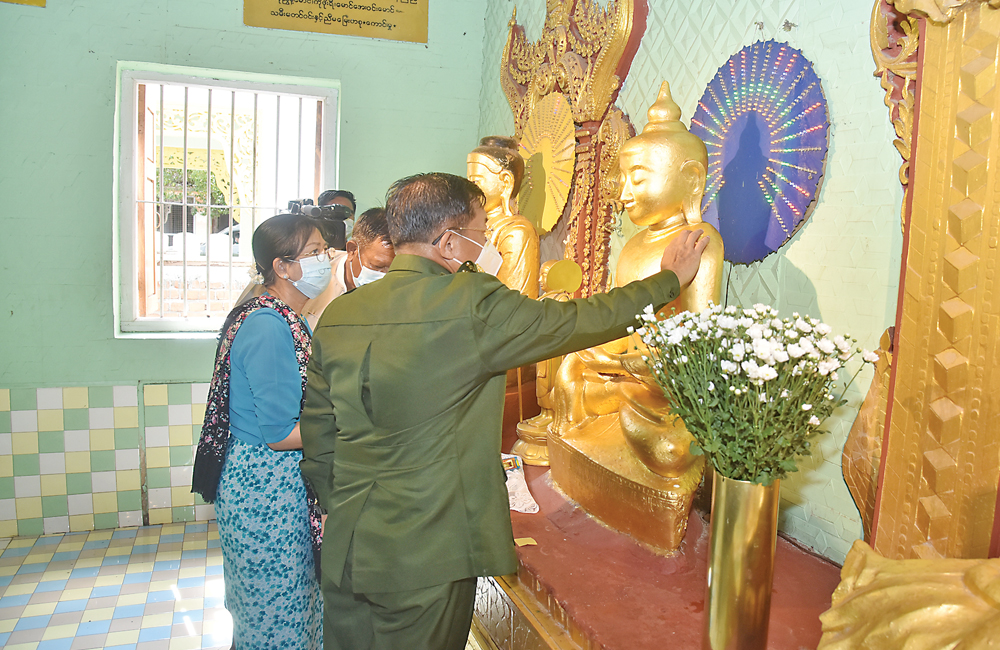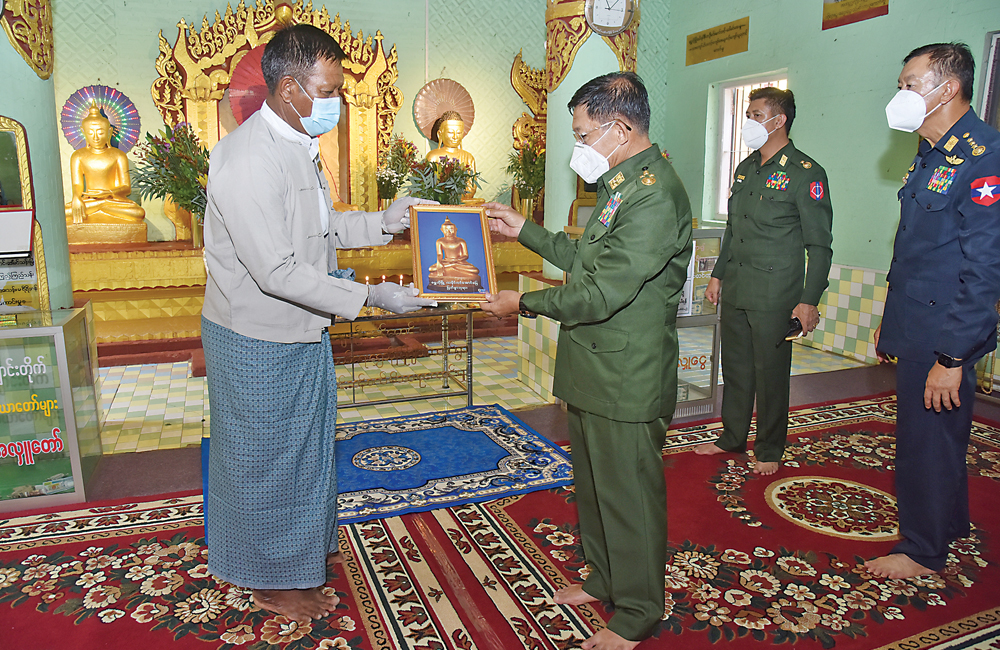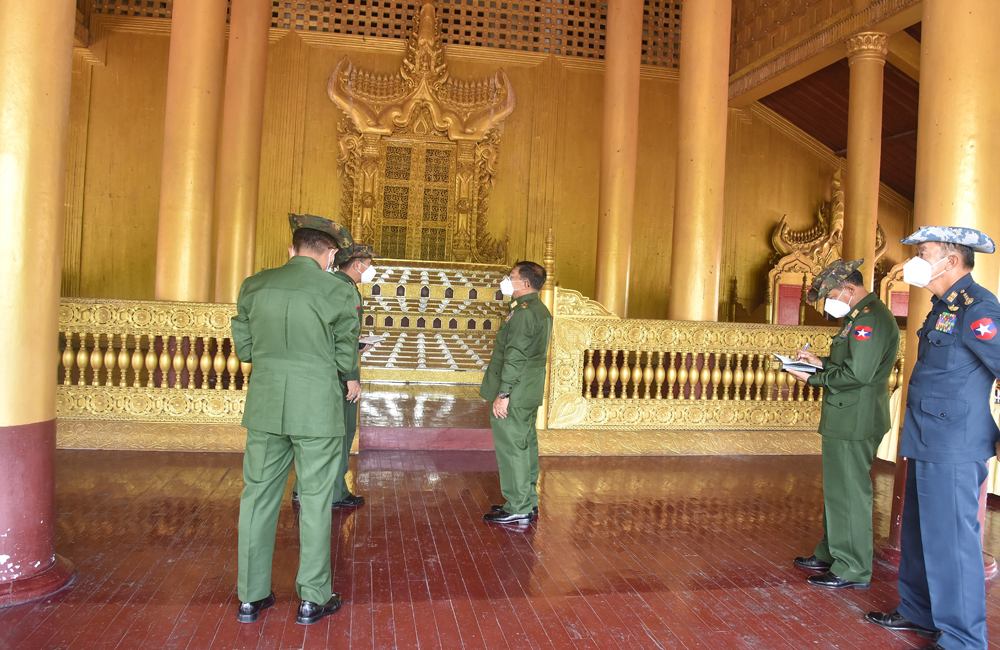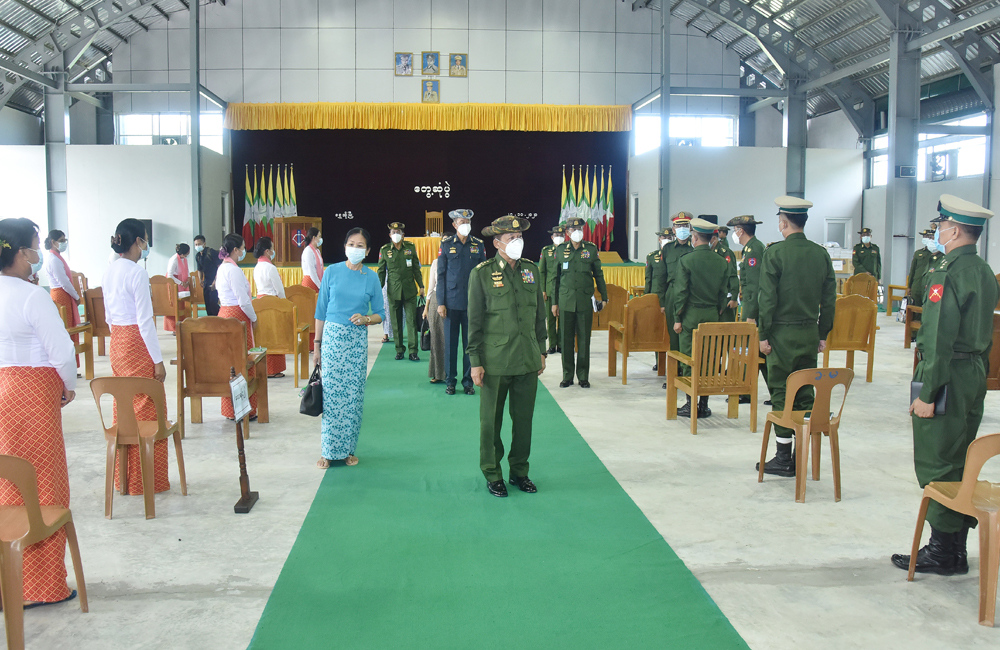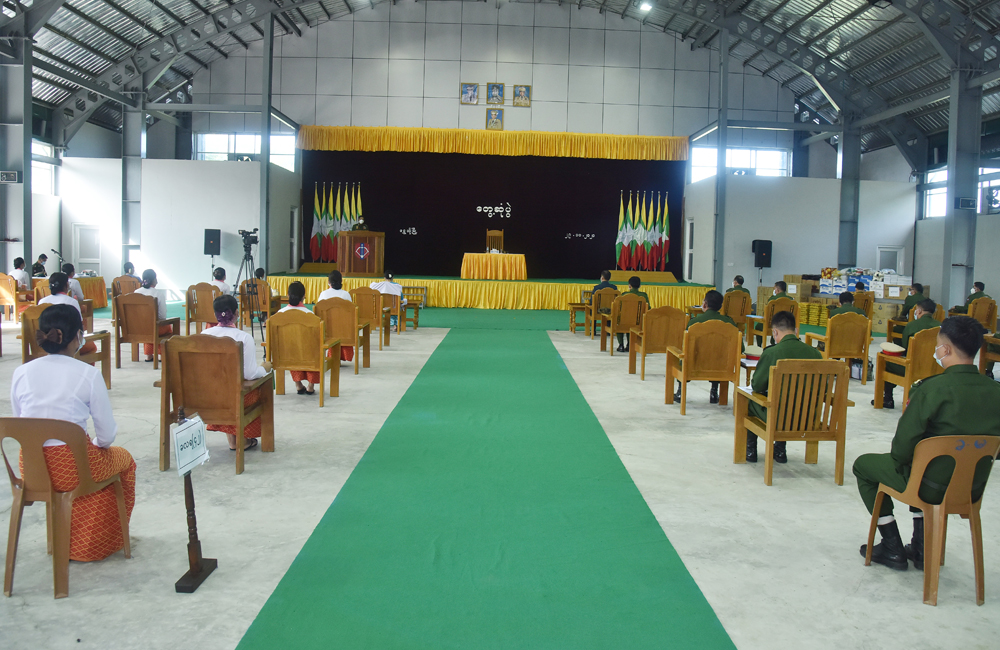Nay Pyi Taw October 29
Commander-in-Chief of Defence Services Senior General Min Aung Hlaing met officers, other ranks and families of Shwebo Station of North-West Command this morning.
Also present were Daw Kyu Kyu Hla, wife of the Senior General, Commander-in-Chief (Air) General Maung Maung Kyaw and wife, senior military officers from the Office of the Commander-in-Chief (Army) and their wives, Commander of North-West Command Maj-Gen Myo Moe Aung and wife and officers, other ranks and families of Shwebo Station.
In his address, the Senior General said historians have designated the periods in history during which the national strength could be consolidated as the First, Second and Third Myanmar Empires. U Aung Zeya founded the Third Myanmar Empire or the Konboung era in Shwebo. The Konboung dynasty lasted from 1752 to 1885 AD, the year Myanmar lost independence, for 133 years. Although the country could be consolidated during the period, independence was lost due to some weaknesses in unity and the invasion of the colonialists with superior power. No loss is greater than the loss of independence for a country. So, people of the present period have the responsibility for safeguarding the sovereignty for its perpetuation.
Shwebo District is one of the rice bowls of Myanmar, and it has a favourable natural situation. As it is the seat of ancient Myanmar kings, it is a prestige for the people living in or assigned at the area. But they should not be satisfied with the regions reputation; they must preserve the existing prestige and the fine traditions of the area.
Myanmar once became a colony after losing her independence in 1885 and disruption of its dynasty because of the lack of unity and modern weapons to resist the occupation. Therefore, it took many years to rebuild the unity of the entire country before regaining independence. Myanmar has now adopted the multi-party democracy system and it is necessary to take measures systematically in democratization and to nurture a large number of educated citizens because such measures can only be taken prudently with higher wisdom so that disciplined democracy system can be implemented successfully. The country has many educated people but only a few percent of them are highly educated. Although children for about cent per cent go to school at the beginning of their schooling age, the number of students drops gradually when they move up from one grade to another, leaving only 10 percent of them at school when they reach the matriculation.
According to the population census conducted in 2014, which asked questionnaires to five age groups of people between the age of 5 and 21, it was learnt that about 5.6 million people had never gone to school.
As the development of a country will be delayed if it does not have educated people, it is necessary to exert efforts to nurture educated people. The Tatmadaw has consistently taken measures to enhance the education of personnel and their dependent family members. As people will read books only when they are literate and their thinking will improve only when they read books, it is necessary to best utilize the opportunities to study. As Myanmar is a country with its own
historical traditions of excellence, it is important not only to preserve the historical traditions but also to improve them during the lifetime of us. Under the democratic system, rights cannot be demanded through violent means and they must be demanded systematically without committing acts that undermine the rule of law.
As for the upcoming election, it is essential to take the lessons experienced during the past two governments into consideration while choosing among candidates. As every country is striving for development, candidates who are capable of bringing about development for the region and country and correctly leading the country by maintaining good relations with the international community must be elected with prudence. As the number of COVID-19 is still rising, it is essential for all officers, other ranks and families to take preventive measures effectively and to comply with rules and guidelines issued.
After the meeting, the Senior General presented surgical masks, food, publications and sports equipment for officers, other ranks and their families from various stations and Daw Kyu Kyu Hla cash awards for the maternal and child welfare association. The station commander and the wife of an official accepted the supplies.
The Senior General and wife and party cordially greeted the attendee officers, other ranks and families.
After inspecting the units and regiments in Shwebo Station by car, the Senior General visited Shwebon Yadana Mingalar Palace in Shwebo and studied Myaynandaw hall, the Thihathana throne, Nanma tier-roofed hall and the bronze statue of the third Myanmar founder King Alaung Mintayagyi U Aung Zeya. The Senior General stressed the need for greening and maintenance tasks as damage can be caused by excretion of birds roaming there, preservation of them in original
styles and upgrading tasks in coordination with the region government and the Department of Archaeology and National Museum (Sagaing Branch). After singing the visitors’ book, the Senior General paid homage to the NanU Pagoda in the palace compound and offered flowers, water and oil lights.
The construction of Shwebon Yadana Mingalar Palace started with a foundation laid by Alaung Mintayagyi U Aung Zeya on 21 June 1753 and a golden umbrella was hoisted on 21 September 1754. After the palace was moved to Inwa city in the reign of King Hsinbyushin in 1766, the palace became less and less popular. In 1888, the British colonialists converted the palace into a district level prison. It existed as prison till 1994. On 2 November 1994 in the tenure of the Tatmadaw government, the palace was rebuilt with a cornerstone-laying ceremony. It was handed over to the Department of Archaeology, National Museum and Library under the Ministry of Culture on 4 July 2004. Since 7 June 2013, the Sagaing Region government has taken responsibility for maintenance and protection of the palace.
Later, the Senior General and party went to the historic Maha Aungmyay Sutaungpyae Pagoda in Shwebo and offered flowers, water, oil lights, gold foils and cash donations. The chairman of the pagoda board of trustees accepted the donations and returned Dhamma gifts. Then, the Senior General and party paid homage to Aungmyay Bawdi Pagoda built as a replica of Maha Bawdi Pagoda in India’s Bodh Gaya located near the Maha Aungmyay Sutaungpyae Pagoda.
The Senior General offered flowers, water and oil lights to the pagoda. The Senior General and party went round the pagoda and were conducted there round by the chairman of the pagoda board of trustees.
